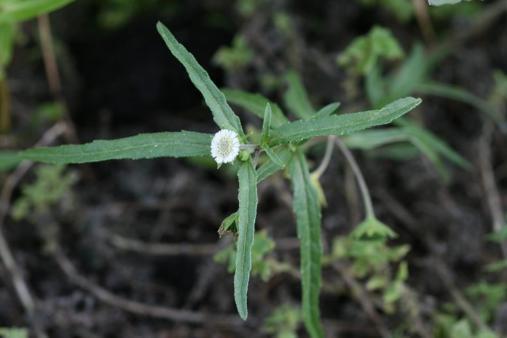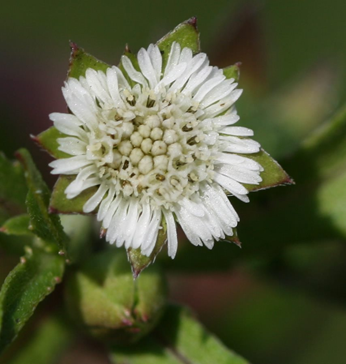False Daisy (Eclpita Prostrata)

Asteraceae (Sunflower Family)
Group: Dicot (Broadleaf)
Prostrate, erect, or spreading summer annual herb native of Asia, with thick and succulent stems. Leaves and stems turn black when broken from the plant. It is found in cultivated fields, along canals and ditches, and on roadsides.
Leaves are opposite, with or without a short petiole, narrow at base, elliptic to much longer than wider, and with stiff hairs on the lower surface. Leaf margins have widely sharp teeth pointing toward the apex.
Stem is prostrate, spreading, or erect, 1 to 5 feet tall, freely branched, greenish to reddish brown or purplish, and roots at lower nodes. Stems are thick and succulent with rough or sand-papery feel from stiff trichomes or hairs.

Flowers are two solitary heads, green earlier then white with short rays.

Roots are fibrous from a shallow taproot or lower nodes of the stem.
Propagation is by seed.
